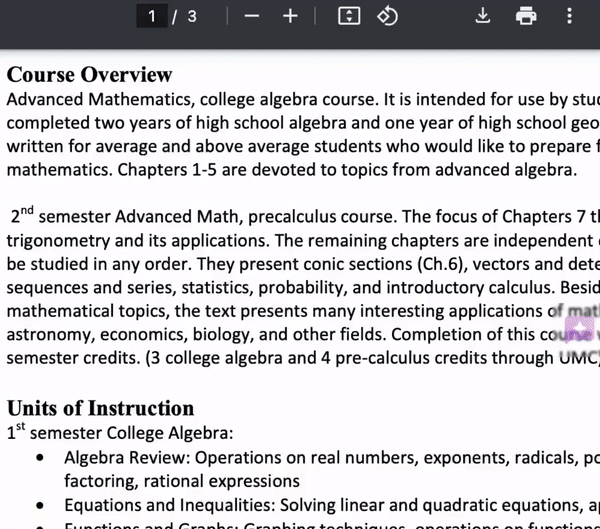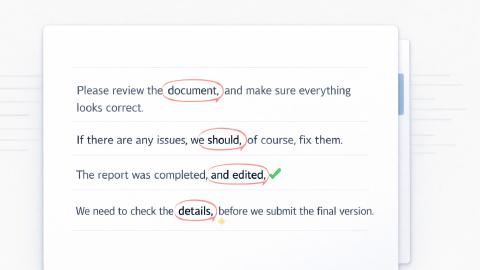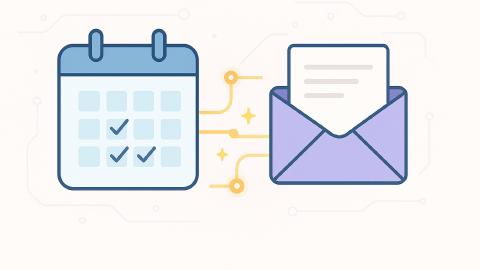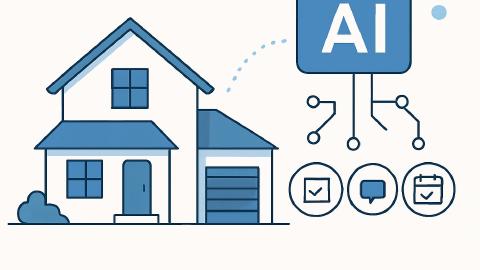How to Create Lesson Plans Using the 5e Model of Instruction: Ultimate Guide
Use these examples & templates to create science lesson plans using the 5e model of instruction.
Creating effective science lessons can be challenging, especially when trying to keep students engaged.
The 5e Model of Instruction offers a structured and proven approach for planning lessons that captivate curiosity and deepen understanding.
The 5e Model of Instruction is a student-centered teaching framework that organizes lessons into five phases: Engage, Explore, Explain, Elaborate, and Evaluate.
This guide walks through the basics of the 5e model of instruction, its benefits, and step-by-step instructions for creating lesson plans tailored to science education.
What is the 5e Model of Instruction?
The 5e Model of Instruction is a structured teaching approach that promotes active, student-centered learning through five phases: Engage, Explore, Explain, Elaborate, and Evaluate.
Each phase plays a critical role in guiding students from curiosity to deeper understanding and application of concepts.
This model is particularly effective in science education because it mirrors the process of scientific inquiry.
Engage
The Engage phase captures students' attention and sparks curiosity about a topic. Teachers use thought-provoking questions, phenomena, or demonstrations to draw students in and connect the lesson to prior knowledge.
The goal is to motivate students and set the stage for learning.
Example: In a lesson on electricity, the teacher shows a static electricity demonstration by rubbing a balloon on hair and making paper pieces stick to it. Students are asked, “Why does this happen?”
Explore
The Explore phase allows students to investigate and experiment with minimal teacher guidance.
It focuses on hands-on activities or collaborative investigations, helping students build foundational understanding through discovery and inquiry.
Example: Students are given batteries, wires, and bulbs to create a simple circuit. They experiment with different configurations to see how the circuit works and what’s needed to make the bulb light up.
Explain
During the Explain phase, students articulate their understanding of the concept, and the teacher introduces formal explanations to reinforce learning.
This phase bridges students' observations and the scientific principles behind them.
Example: After exploring circuits, the teacher explains how electricity flows in a closed path, introducing terms like conductor, insulator, and current. Students share their findings from the activity and connect them with the teacher’s explanation.
Elaborate
The Elaborate phase extends learning by encouraging students to apply their knowledge in new contexts or solve more complex problems.
This phase solidifies understanding and helps students see the broader relevance of what they’ve learned.
Example: Students design a circuit to power a small fan using switches and multiple components. They apply their understanding of circuits to create and troubleshoot their designs.
Evaluate
The Evaluate phase assesses students’ understanding and provides feedback. This can include formal assessments, such as quizzes, or informal methods, like discussions or projects.
It ensures that learning goals are met and identifies areas needing reinforcement.
Example: Students create a poster explaining how a circuit works and present it to the class, demonstrating their understanding and answering questions from peers and the teacher.
By breaking lessons into these phases, the 5e Model provides a clear and effective roadmap for fostering deep learning and engagement.
Use AI Blaze to generate 5e model lesson plans.
Benefits of the 5e Instructional Model for Science Lessons
The 5e Model is highly effective for teaching science because it engages students in active learning and inquiry. Its structured phases help students build a deeper understanding of concepts while fostering critical thinking and collaboration.
Here are the key benefits of using the 5e instructional model for science lessons:
It encourages active learning - Students participate directly in experiments, discussions, and problem-solving activities.
It supports inquiry-based learning - Lessons align with the scientific method, promoting exploration and discovery.
It builds conceptual understanding - Concepts are introduced progressively, ensuring foundational knowledge is solid before advancing.
It fosters critical thinking - Challenges students to analyze, evaluate, and apply knowledge to solve problems.
It provides a flexible framework - Adaptable to various age groups, topics, and teaching styles, making it versatile for different science lessons.
It promotes collaboration - Encourages teamwork and communication through group-based activities and discussions.
By incorporating these benefits, the 5e Model enhances both teaching and learning experiences in the science classroom. It helps students engage meaningfully with concepts, preparing them for real-world applications.
How to Create Lesson Plans With the 5e Model
Creating lesson plans using the 5e Model involves a step-by-step approach that ensures every phase is aligned with learning objectives.
Below are key tips for developing effective 5e lesson plans, broken into actionable steps to simplify the planning process.
Identify Objectives
Start by clearly defining the learning objectives for your lesson. Determine what students should know, understand, or be able to do by the end of the lesson.
Objectives provide a foundation for planning each phase of the 5e Model, ensuring activities and assessments are purposeful and aligned.
Writing specific and measurable objectives helps guide your decisions throughout the process.
Understand Each Phase and Its Purpose
Before diving into lesson planning, familiarize yourself with each phase of the 5e Model and its role in the learning process.
Here’s one tip for each phase:
- Engage: Use open-ended questions or surprising demonstrations to capture attention and stimulate curiosity.
- Explore: Choose hands-on activities that allow students to investigate without needing immediate guidance.
- Explain: Prepare clear explanations that directly connect to students’ observations from the Explore phase.
- Elaborate: Design tasks that require students to apply their understanding in new or creative ways.
- Evaluate: Use a mix of formative and summative assessments to measure learning and provide feedback.
By understanding the purpose of each phase, you can ensure that all components of your lesson are cohesive and aligned.
Plan for Engagement
The Engage phase should spark curiosity and connect the topic to students' prior knowledge or experiences.
Select an attention-grabbing question, demonstration, or phenomenon to kickstart the lesson. Ensure the activity is intriguing but not overly complex, as it sets the tone for the rest of the lesson.
This phase is crucial for motivating students and building anticipation for exploration.
Design Exploration Activities
The Explore phase should allow students to investigate and discover concepts through hands-on activities or experiments. Choose tasks that encourage inquiry and collaboration, giving students the opportunity to learn through experience.
Ensure materials and instructions are clear but avoid giving away too much guidance, as the goal is to let students explore independently.
Activities should be directly related to the lesson objectives and prepare students for the Explain phase.
Develop Explanation Materials
During the Explain phase, prepare resources to help students articulate their understanding and connect it to formal scientific concepts.
Plan discussions, presentations, or multimedia aids that clarify the findings from the exploration. Encourage students to share their observations and link them to the lesson’s core principles.
This phase should bridge what students discovered and the formal explanation of the concept.
Extend Learning Through Elaboration
The Elaborate phase challenges students to apply their knowledge in new and deeper contexts. Design activities that require problem-solving, critical thinking, or creative applications of the concept.
This phase helps students solidify their understanding and see the broader relevance of what they’ve learned. Choose tasks that connect the topic to real-world situations or other areas of study.
Evaluate Understanding
Plan assessments to measure students' progress and provide feedback during the Evaluate phase. Include a mix of formal and informal methods, such as quizzes, presentations, or group discussions.
By following these steps, teachers can create structured, engaging, and impactful lesson plans that fully utilize the 5e Model. This process ensures every phase contributes to a cohesive learning experience that meets educational goals.
Create 5e Model Lesson Plans With AI

If you are looking for a way to create 5e model lesson plans, give AI Blaze a try to help you generate them quickly.
AI Blaze is the ultimate AI assistant that helps you quickly generate lesson plans, generate text, grade essays, provide feedback, and much more!
Simply open your syllabus, ask AI Blaze to generate the 5e model lesson plan, and AI Blaze will create it based on your standards, assignments, and timelines.
Features
Generate 5e model lesson plans with AI - Generate high quality lesson plans for any class using AI.
Grade & check essays & assignments - Use AI to provide feedback and grade/check essays, papers, and assignments.
Instantly use GPT-4 on any site with keyboard shortcuts and a dynamic AI sidebar assistant!
AI Blaze is free! - Forget about annoying licenses or subscriptions.
Use AI Blaze to generate 5e model lesson plans.
5e Model Lesson Plan Examples & Templates
The 5e Model can be applied to various science topics, making it a versatile framework for lesson planning.
Below are examples of how to design lessons for physics, biology, and earth science, showcasing how each phase can be implemented effectively.
Physics Example: Newton’s Laws of Motion
Newton’s Laws of Motion are foundational for understanding physics and are ideal for hands-on and visual learning.
This lesson can engage students with dynamic activities that demonstrate real-world applications of force and motion.
The combination of simple experiments and reflective discussions helps students internalize complex concepts like inertia, acceleration, and action-reaction pairs.
- Engage: Show a video of a rocket launch and ask students what forces are at work.
- Explore: Provide materials to build simple balloon rockets and have students observe their motion.
- Explain: Facilitate a discussion about the observed forces and introduce Newton’s Laws with examples from the activity.
- Elaborate: Challenge students to design a more efficient balloon rocket, considering factors like propulsion and trajectory.
- Evaluate: Use a quiz or reflective questions to assess students’ understanding of Newton’s Laws.
Biology Example: Photosynthesis
Photosynthesis is a core concept in biology that connects students to the natural world around them.
Using the 5e Model, this lesson makes the process tangible by linking it to familiar examples and conducting simple experiments.
Visual aids, hands-on activities, and creative assignments ensure students not only understand but also appreciate the importance of photosynthesis.
- Engage: Display two plants, one thriving under a grow light and another struggling in a dimly lit area, and ask why they look different.
- Explore: Conduct an experiment where students observe the effects of light and water on plant growth.
- Explain: Discuss the process of photosynthesis, emphasizing how plants convert light into energy and release oxygen.
- Elaborate: Have students create models or diagrams illustrating the photosynthesis process, including chemical equations.
- Evaluate: Assign a worksheet or presentation to assess their knowledge of photosynthesis.
Earth Science Example: Erosion
Erosion is a dynamic process that shapes landscapes and is relatable to students through real-world examples.
This lesson leverages engaging visuals and experiments to help students see how natural forces like wind and water affect the environment.
By simulating erosion and exploring its impact, students gain a clearer understanding of geological processes and their consequences.
- Engage: Show before-and-after images of landscapes impacted by erosion and ask students what caused the changes.
- Explore: Use sand, water, and wind in a small-scale experiment to simulate and observe erosion in action.
- Explain: Relate the experimental findings to the principles behind erosion, including weathering and the role of water and wind.
- Elaborate: Have students propose solutions to prevent erosion in specific environments, like coastal areas or farmland.
- Evaluate: Ask students to write a report summarizing their findings and recommendations to demonstrate understanding.
These examples demonstrate the adaptability of the 5e Model across various science disciplines, helping students actively engage with and apply their learning.
Generate 5e Model Lesson Plans With AI Blaze
The 5e Model of Instruction offers a robust framework for designing engaging and effective science lessons. By focusing on phases that promote inquiry and understanding, teachers can create lessons that resonate with students and deepen their knowledge.
With tools like templates and AI support, implementing the 5e Model becomes even more accessible. Science teachers looking to transform their lessons should explore this model and see its benefits in action.
Use AI Blaze to generate 5e lesson plans using AI for free!




